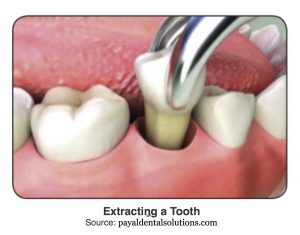Dentures (“false teeth”) need to be cleaned. They won’t decay, but they will acquire an unpleasant odour. An unpleasant odour is a good clue that there are unhealthy micro-organisms predominating.
In the Office
Using an ultrasonic stain/debris removal solution to remove debris from full and partial dentures, gives us a way to “scrub” their surface at a microscopic level. (more…)
Dental sealants are a plastic (composite) coating applied to vulnerable areas of teeth to make decay less likely to get started.
They are only applied to the back teeth – the molars and premolars. These are the teeth that have ‘pits’ (small hollows) and ‘fissures’ (grooves) on their biting surfaces. Therefore, they are also known as pit and fissure sealants. (more…)
One of the most important problems in dentistry is infection control. The oral cavity is like an ocean full of microorganisms normally living in balance with the entire body. Under certain conditions, pathogenic (“disease causing”) micro-organisms can become the dominant life forms, thus creating what is known as infection. These pathogenic microorganisms live together to form a biofilm made up of bacteria, viruses, fungi, and protozoa.
If we were to treat this condition with drugs, each of these “disease causing” types would likely need a different drug to eliminate its dominance. (more…)
A Re-Care appointment means that after some agreed-upon interval, we are following up (more…)
by Bruna Mucaj, RRDH.
To an enormous extent, dental disease is preventable. But by far the most effective prevention is done by the teeth’s owners, (or the owner’s parents) – not by the dental profession and not by the government! We believe that of all the services we provide, Oral Hygiene Instruction is right up there with Nutritional Counselling as the most valuable. Alas, several factors conspire to frustrate our efforts. (more…)
What patients call a “cleaning,” dental professionals call scaling and polishing. Instead of polishing we sometimes use the word “prophylaxis” which means “prevention.” As much as it thrills?us to use important sounding words like “prophylaxis” we often can’t be bothered with all those pesky syllables. So we just say “prophy.” Let’s settle for “polishing.”
What, Exactly, Are We Cleaning?
We are trying to eliminate some or all of three things:
- Stain
- Plaque
- Tartar (“calculus”)
While the general population talks about “the bite” when referring to how the teeth fit together, dentists, for some reason, talk about “occlusion.” We’ll stick with “the bite.” When the public asks about “adjusting the bite,” dentists are thinking “occlusal equilibration.” I mention these terms in case you run across them while talking to insurance companies or wandering about the Internet. I’ll try never to mention them again. ?
The teeth of each jaw function in harmony with each other and with the jaw joints. The jaw joints are called the Temporo-MandibularJoints. Thankfully there is a short form for that – TMJ. Also performing as part of this harmonious “choir” are the muscles we call cheeks, lips and tongue (and many other muscles of the head and neck.) The choir director is the brain. When all is well, beautiful music results – speaking, chewing, swallowing , smiling, and even actual music – whistling and singing. (more…)
At Growing Beautiful Smiles, we perform some services differently from what is normally done at most dental treatment facilities. Such differences are sometimes called “wholistic,” “alternative,” “biological,” or “integrative.”
For instance, the science that drives mainstream dentistry seems quite certain that the use of mercury in dental “silver” fillings is “safe.” The same type of interpretation of scientific evidence says fluoride is necessary and safe for (almost) everyone, and that root canal treatments offer no threat to general health. These are consensus judgements made by experts of the dental “establishment.” These consensus opinions form what is called the “standard of care” by which the dental profession governs itself.

